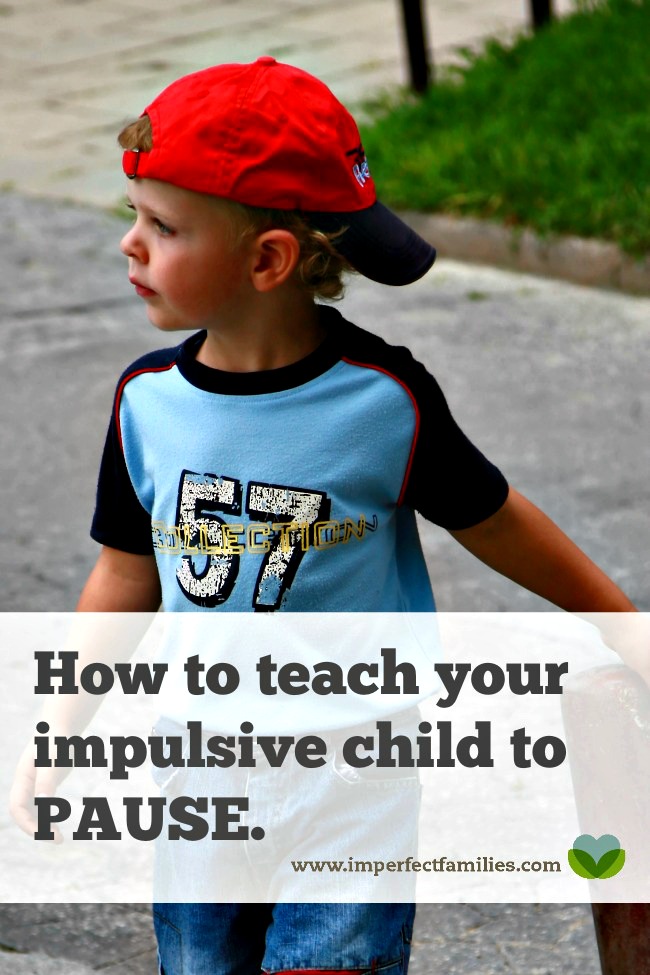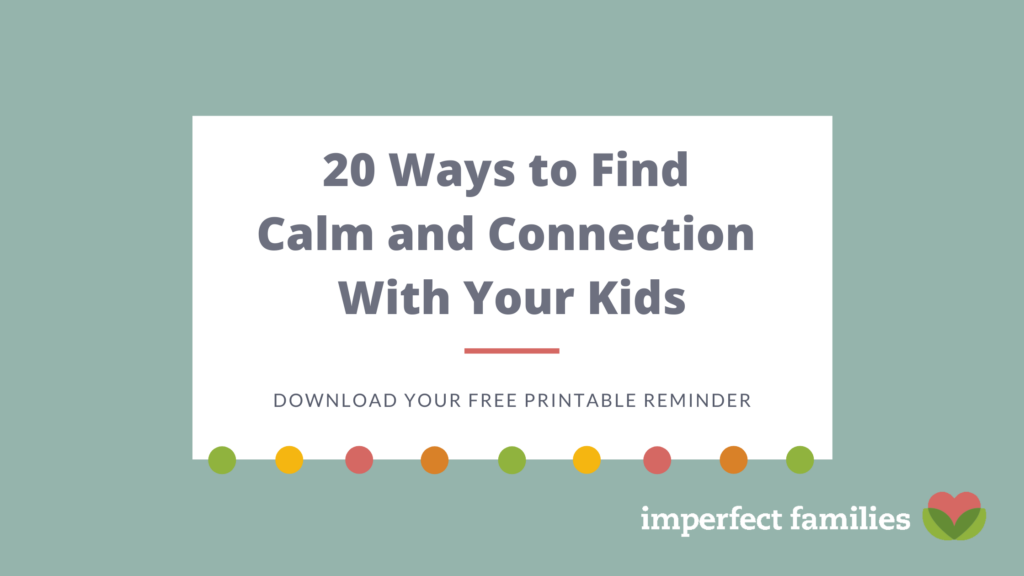
All kids are impulsive. They hit, bite, kick and yell without thinking through the consequences. They feel a feeling and act on it. We can blow this off as “kids will be kids” or send them to the corner until they “learn their lesson.”
Or, we can introduce our kids to the PAUSE.
Your Child’s Brain
Research shows that your child’s brain is constantly developing. In fact, the decision-making part of their brain is still being shaped until they are in their 20’s! (Yikes!) While that seems like a hopeless statistic, the good news is you are able to help your child’s brain learn to make good decisions now.
One of the first steps to making a good decision is to think calmly about our options. Unfortunately, when we are upset, worried, frustrated or angry, our brains are responding emotionally, not rationally. Which means our child will respond emotionally…not rationally.
The word PAUSE is a verbal reminder to our kids that they need to calm their body so that they can make a better choice. The script below is just a sample, feel free to use words or examples that apply to your child. Practice this skill when your child is calm and happy!
Teaching Your Child to Pause
1. To begin, talk with your kids about their brain using age-appropriate language.
Your brain is awesome! It sends messages to all of your body parts and tells them what to do! It helps you jump, run and even pick your nose! Your brain helps you do math, spelling, and reading. It also helps you make decisions. Unfortunately…your brain does not think clearly when you are mad, upset or super-duper excited.
2. Next, introduce the concept of a pause. If you don’t like the word PAUSE, pick something else…even something silly like RAISINS.
You know how to pause your video games and the DVD player, but did you know that you can also pause your body? Yep. Let’s play a game. You do a silly dance until I yell PAUSE, then you freeze.
3. Tie the brain information and the pause together.
Remember when I said that sometimes our brains can’t think very clearly? Did you know that you can help your brain think clearly? Yep, you can! By doing a PAUSE! When we pause, we’re going to take a big deep breath. This is going to give our brains some good clean air to think better. Can you do a big deep breath? Good! We might need to take more deep breaths if we’re not feeling calm yet.
4. Now add the emotional aspect.
Let’s think of a time when it might be hard to make a good choice. Maybe when someone takes your toy without asking, when you’re confused about your homework assignment or when mom says it’s time to come inside for dinner. Can you think of some? When those things happen you might be feeling sad, angry, frustrated or worried.
5. Practice the pause.
Oh No! That means our brain is not thinking clearly! We can’t make a good choice when we’re so upset. So sometimes we hit, kick, rip up our homework or yell. How can we make a better decision? What can we do?? PAUSE! Let’s take a deep breath. Do we need another one? Ok, deep breath. Good!
(There are lots of other things your child can do during a pause: How To Teach Your Child to Take a Deep Breath and Beyond Taking a Deep Breath)
Incorporate Pause Into Everyday Life
Once you’ve practiced, you can use the word “PAUSE” when your child is becoming emotionally overwhelmed and unable to make a good decision.
I can see you’re getting really upset with your brother. Let’s PAUSE quickly. OK, are we ready to make a good choice or should we do something else until we’re calm?
And, don’t forget to model it for your child. Delaying a conversation to give yourself time to calm down and think rationally is a great skill for your children, but it can also help you feel less pressure to come up with a response on the spot.
“I’m feeling super frustrated about this broken window. I’m not calm enough to talk about it right now. I’m going to PAUSE for a while and talk about it when my brain can think clearly.” Or “I know you’re excited about the concert, but I don’t think we can make a good decision about this until we take some deep breaths and think through the pros and cons calmly.”
Don’t Stop There!
Helping your children learn to pause their behavior and give themselves time to think is one step. The next step is letting your child use their own strategies and ideas to solve the problem or make a better choice.
Here are some resources to help you encourage your children to use their calm, thinking brains to work out solutions.
What Angry and Anxious Kids Need to Know About their Brain
Helping Your Children Become a Critical Thinker and Problem Solver
Teaching Your Child to Respectfully Disagree
How Can I Help You?
Does this seem a little overwhelming or even impossible for your child or your family? I’d love to help. Parent Coaching focuses on helping you become the parent you want to be by providing solutions, encouragement, and support online.



Comments have been turned off to retain the privacy of all families. If you have a question or comment on the topic, you're always welcome to contact me.